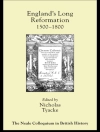In the early twentieth century, an epic battle was waged across America between the interurban railway and the automobile, two technologies that arose at roughly the same time in the late 1890s. Nowhere was this conflict more evident than in the Midwest, and specifically Indiana, where cities of industry such as Indianapolis, Gary, and Terre Haute were growing faster every day. By 1904, Indianapolis had opened the Traction Terminal, which was widely acclaimed to be the largest and most impressive interurban station in the world. Yet, today there is only 90-mile remnant of this one great system still operating within Indiana.
Featuring over 90 illustrations and featuring contemporary accounts and newspaper articles from the period, Electric Indiana is a biographical study of the rise and fall of a onetime important transportation technology that achieved its most impressive development within the Hoosier state.
Зміст
Introduction: Interurban versus Automobile
1. Memories and the Personal Discovery of Indiana’s Interurban Era
2. The Promise of Electricity, The Peril of Gasoline
3. Investor’s Dilemma: Interurban or Automobile?
4. Hoosier Hysteria; or, the Interurban Boom Years
5. Gas Belt Prosperity and Indiana’s Interurban Pioneers
6. Hugh Mc Gowan, Interurban Empire Builder
7. The Expansive Dozen Years
8. Growing Traffic, Going the Distance
9. Travel by Interurban
10. A Time for Sober Reflection
11. Jitney, the Emergence of an Intrusive Technology
12. Losing Traction, Rising Highway Competition
13. Deadly Delusion: The Comeback that Never Was
Conclusion: Remnants
Appendix: Who Really Coined the Word ‘Interurban’?
Suggestions for Further Reading
Про автора
Carlos Arnaldo Schwantes is author or editor of twenty books, as well as co-author (with Peter Hansen and Don Hofsommer) of Crossroads of a Continent: Missouri Railroads, 1851–-1921. He grew up in Greenfield and Indianapolis, Indiana, and now lives in Missouri. He is Saint Louis Mercantile Library Professor of History Emeritus at the University of Missouri – St. Louis, where he taught undergraduate and graduate history for exactly fifty years.












